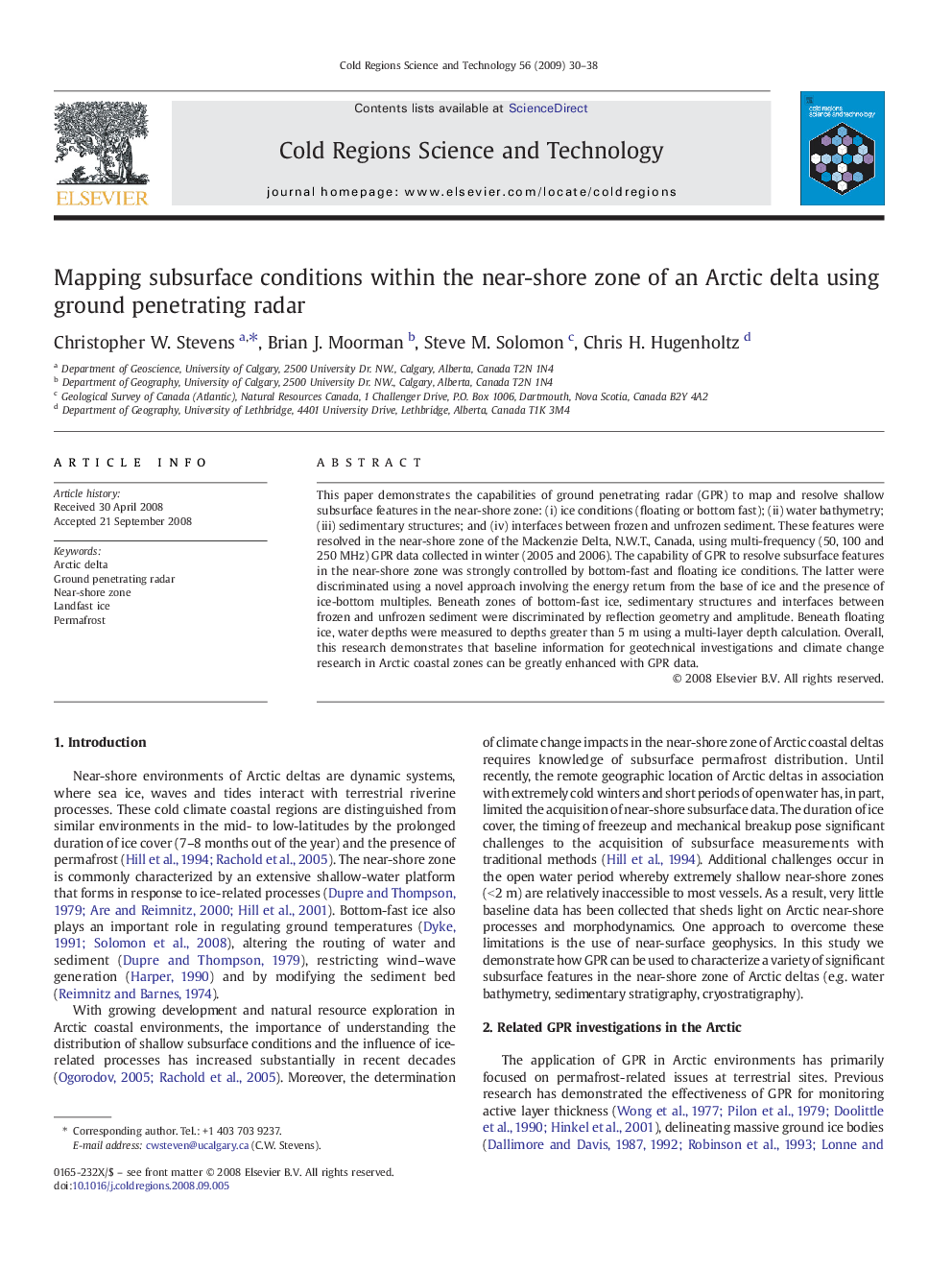| Article ID | Journal | Published Year | Pages | File Type |
|---|---|---|---|---|
| 4676540 | Cold Regions Science and Technology | 2009 | 9 Pages |
Abstract
This paper demonstrates the capabilities of ground penetrating radar (GPR) to map and resolve shallow subsurface features in the near-shore zone: (i) ice conditions (floating or bottom fast); (ii) water bathymetry; (iii) sedimentary structures; and (iv) interfaces between frozen and unfrozen sediment. These features were resolved in the near-shore zone of the Mackenzie Delta, N.W.T., Canada, using multi-frequency (50, 100 and 250Â MHz) GPR data collected in winter (2005 and 2006). The capability of GPR to resolve subsurface features in the near-shore zone was strongly controlled by bottom-fast and floating ice conditions. The latter were discriminated using a novel approach involving the energy return from the base of ice and the presence of ice-bottom multiples. Beneath zones of bottom-fast ice, sedimentary structures and interfaces between frozen and unfrozen sediment were discriminated by reflection geometry and amplitude. Beneath floating ice, water depths were measured to depths greater than 5Â m using a multi-layer depth calculation. Overall, this research demonstrates that baseline information for geotechnical investigations and climate change research in Arctic coastal zones can be greatly enhanced with GPR data.
Related Topics
Physical Sciences and Engineering
Earth and Planetary Sciences
Earth and Planetary Sciences (General)
Authors
Christopher W. Stevens, Brian J. Moorman, Steve M. Solomon, Chris H. Hugenholtz,
